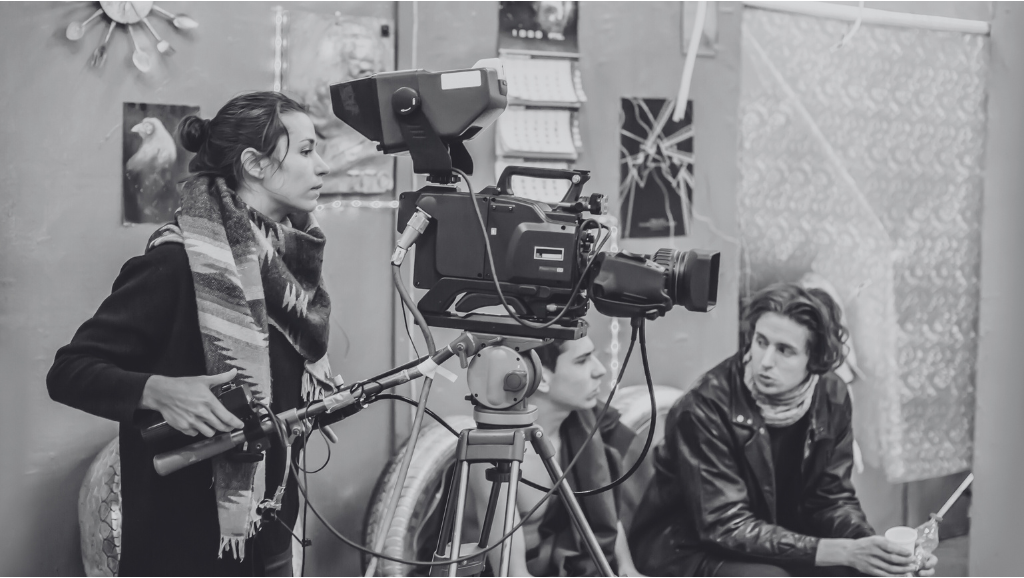The film industry is known for its glamour, creativity, and the ability to tell stories that captivate audiences worldwide. Movies shape culture, influence ideas, and raise awareness about important topics. However, beneath the surface of this celebrated world, there exists a darker reality that is rarely talked about—human trafficking.
While many films have highlighted issues like sex trafficking, the reality of trafficking is far more complex and includes various forms of exploitation. This blog dives deep into the issue of human trafficking within the film industry and how it affects workers, both in front of and behind the camera.

The Power of Film and Its Responsibilities
Movies have a strong influence on how we see the world. They shape our opinions, impact culture, and get people talking about important issues. However, when it comes to human trafficking, films often focus on dramatic stories like kidnappings and daring rescues. While these make for gripping movies, they often miss the quieter, everyday ways trafficking happens—ways that can be much harder to notice. By focusing only on the extreme cases, films can sometimes leave out the bigger picture, making it harder for people to understand the true, widespread nature of trafficking. It’s important for filmmakers to tell these hidden stories, so we can all better understand and fight against this serious issue.
One of those hidden stories lies within the film industry itself. Human trafficking, particularly in the form of labor exploitation and abuse, has quietly infiltrated the entertainment world. From vulnerable workers on film sets to individuals coerced into exploitative contracts, trafficking can happen in ways that go unnoticed by the public eye. This is an issue that demands attention, as the industry that shapes our cultural narratives must also confront its own complicity in these harmful practices.\
Key Statistics
- Global Impact: The International Labour Organization (ILO) estimates that around 24.9 million people are currently victims of forced labor globally, including sectors like entertainment. This figure includes not only victims of sex trafficking but also those trapped in forced labor.
- Exploitation in Developed Countries: Contrary to popular belief, trafficking does not only occur in developing nations. A report by the Polaris Project suggests that human trafficking, including labor trafficking in industries like entertainment, is pervasive even in highly developed nations such as the U.S. and Canada.
How Does It Happen?
In the world of film, human trafficking can take various forms, from forced labor to sex trafficking. Often, vulnerable individuals are lured into these situations with false promises of work, travel, or career advancement, only to find themselves trapped in exploitative conditions.
1. Forced Labor Behind the Scenes
While the spotlight often shines on actors and directors, much of the work in the film industry happens behind the scenes. Set builders, production assistants, makeup artists, and even cleaners are crucial to bringing films to life. However, many of these workers are subjected to grueling hours, low pay, and poor working conditions.
In some cases, traffickers deceive workers with the promise of high-paying jobs in prestigious film projects, but once the workers arrive, they are forced to work in inhumane conditions. Their wages may be withheld, and their identification or passports may be taken to prevent them from leaving.
2. Psychological Control and Debt Bondage
Not all trafficking victims are physically restrained. Many are trapped by invisible chains, such as psychological manipulation or debt bondage. Traffickers often create an environment of fear by threatening victims with harm to themselves or their families. Additionally, victims may be coerced into working to pay off debts they owe to traffickers, debts that never seem to decrease. This makes it nearly impossible for the victim to escape.
For example, a worker may be promised a job as a production assistant on a film set, but once they arrive, they are forced to work long hours, with their earnings going directly to pay off travel or housing “debts.” These debts are inflated, making it impossible to repay them, effectively trapping the worker in the situation indefinitely.
3. Sex Trafficking and Exploitation
While labor trafficking is a significant issue in the film industry, sex trafficking is also a problem, particularly when it comes to vulnerable individuals who are promised roles or jobs in exchange for “favors.” Traffickers may manipulate aspiring actors or models, exploiting their dreams of fame and forcing them into commercial sex or pornography.
Misrepresentations in Films
The way human trafficking is portrayed in movies often focuses on kidnappings and rescues, which makes for compelling storytelling but can give the public a skewed understanding of the issue. While films like Taken raise awareness, they also oversimplify the reality.
In reality, trafficking is usually more subtle and far less dramatic. Traffickers often lure victims through promises of employment or better living conditions. Once the victim is under their control, traffickers exploit them through manipulation, intimidation, and isolation.
Eila’s Story: A Real-Life Example

She begins her day long before the city awakens, exhausted but driven by the hope that today might bring a change. Drawn to the film industry by the promise of an exciting career, she quickly found herself trapped in a cycle of grueling labor, with no escape in sight.
Stripped of her passport by the agency that lured her into this situation, she soon realized that her role as a “production assistant” was little more than an endless stream of menial tasks, all while facing constant demands and pressure. The glamour she had envisioned was replaced by a harsh reality where her dreams seemed more distant than ever.
For her, the film set was not a place of creativity and opportunity, but one of relentless exploitation, where her hard work went unnoticed, and her spirit was tested daily.
The Impact of Human Trafficking on Victims
Human trafficking takes a significant toll on the physical and emotional well-being of victims. Trafficking survivors often experience:
- Physical harm: Victims are frequently subjected to harsh working conditions, long hours, and in some cases, physical abuse.
- Mental health issues: The trauma of being controlled, manipulated, and abused can lead to long-term psychological effects like depression, anxiety, and PTSD.
- Isolation: Traffickers often isolate victims from their families, friends, and support networks, making it even harder for them to escape.
- Economic instability: Trafficking victims rarely receive the fair wages they are promised, leaving them in poverty and unable to support themselves or their families.
What Can Be Done?
To combat trafficking in the film industry, it’s essential to raise awareness and create safer working environments. Here are some steps that can help:
- Increase Awareness: The more people know about the realities of trafficking, the easier it is to identify and prevent it. Share information about human trafficking with your network, and stay informed about the industries most affected by exploitation.
- Strengthen Legal Protections for Workers: Governments and industry bodies need to implement stronger labor laws and protections for workers, particularly in industries like film, where freelance and temporary work is common. These protections can help prevent trafficking and exploitation.
- Support Organizations Fighting Trafficking: Consider donating or volunteering with organizations that focus on fighting human trafficking and supporting survivors. These organizations provide critical services like legal aid, counseling, and safe housing for victims.
Conclusion
The film industry has the potential to shine a light on many important social issues, but it also has a responsibility to accurately portray the realities of human trafficking. The issue is complex, and the exploitation of workers is not always visible. By raising awareness, and pushing for stronger protections, we can help combat human trafficking in all its forms.
Human trafficking is not just a problem happening elsewhere—it can happen right here, in industries we may admire, like film. It’s time to look behind the scenes and take action.
